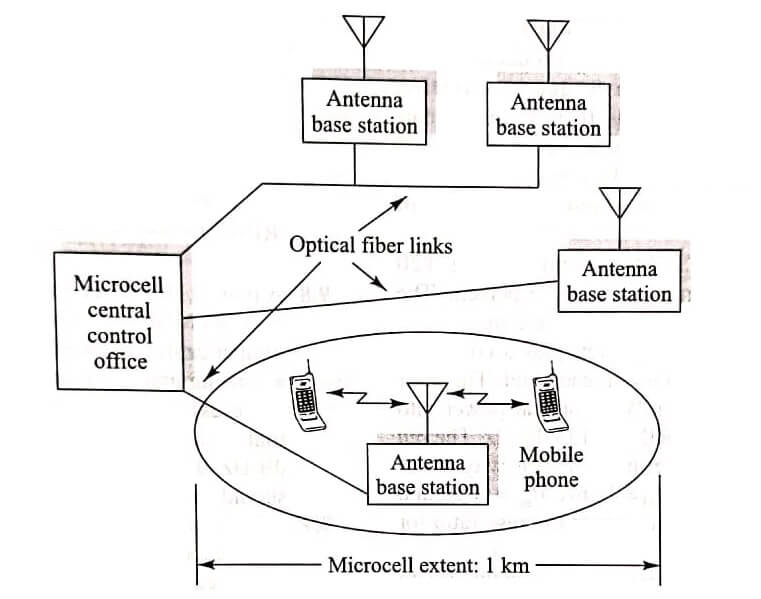Radio over Fiber Links
One application of RF radio over fiber technology is in broadband wireless access networks for interconnecting antenna base stations (BSs) with the central controlling office. Image shows the basic network architecture for such a scheme. Here a collection of antenna base stations provide wireless connectivity to subscribers by means of millimeter-wave frequencies. Subscribers are located up to 1 km from a local base station. The transmission range around a BS is called a microcell (diameter less than 1 km) or a picocell or hotspot (radii ranging from 5 to 50 m). The BS are connected to a microcell control station (CS) in the central office, which is responsible for functions such as RF modulation and demodulation, channel control, and switching and routing of customer calls.

Due to the advantageous transmission characteristics of optical fibers (low loss, high immunity to electromagnetic interference, and a wide bandwidth), a great interest arose in using fibers to connect the base stations to the central office. In addition, individual BSs can be connected independently to the microcell CS through wavelength division multiplexing (WDM) techniques by using a separate unique wavelength for each BS. The network deployment enables all the equipment that performs complex signal processing and call routing to be located in the central office. This structure thus distributes the cost of the central equipment among inexpensive base stations that need to do only amplification plus electrical-to-optical and optical-to-electrical signal conversion.
Microwave Photonics
The field of microwave photonics encompasses the study and applications of photonic devices operating at microwave frequencies. The key components being developed and applied include the following:
- High-frequency low-loss external optical modulators that have linear transfer functions and that can withstand continuous-wave optical powers up to 60 mW
- Optical sources with high slope efficiencies and low RIN that can be modulated at tens of GHz
- High-speed photodiodes and optical receivers that can respond to signal frequencies of 20 to 60 GHz
- Microwave photonic filters that perform the same tasks as standard RF filters
In addition to device developments, microwave photonics also addresses optical signal processing at microwave speeds and the design and implementation of RF photonic transmission systems. For example, applications of photonic signal processing at multiple-gigahertz sampling frequencies include signal filtering, analog-to-digital conversion, frequency conversion and mixings, signal correlation, generation of arbitrary waveforms, and beam-forming methodologies for phased array radars. The literature contains a number of reviews about these and other emerging techniques.
| Read More Topics |
| Radiographic inspection |
| Communication channel |
| Basic communication system |
| Electromagnetic waves |





